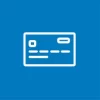The term merchant discount rate or MDR denotes total fees charged by a merchant acquirer when a merchant accepts a payment via a third-party payment service such as a credit card or debit card payment.
The merchant discount rate generally includes the fees charged by your card issuer (interchange fees), the payments processor, the customer’s card issuer and the payment network (Visa, Mastercard, American Express, Diners Club).
Merchant discount rates fall into 3 categories: qualified rate; mid-qualified rate; non-qualified rate. The qualified rate is the lowest available rate and applies to merchants which pose little risk of chargebacks or fraudulent transactions, such as physical businesses in reputable industries which accept card-present payment transactions via point of sale (POS) terminals.
The mid-qualified rate is higher than the qualified rate and applies to businesses with a fair risk of chargebacks and fraudulent transactions – particularly business which accept card-not-present transactions such as online stores.
The non-qualified rate is the highest rate and applies to businesses which pose a high risk of chargebacks or fraudulent transactions – such as businesses in sectors for which special consumer-protection laws apply and online stores which accept remote payments from customers in other countries.
The higher the merchant discount rate applicable to a business, the higher the fees which the business must pay to service providers when it accepts payments via credit cards or other payment services through merchant acquirers will be. Businesses looking to accept cashless payments should request quotes from merchant acquirers and compare these before settling on a payment acceptance service.
More on this topic:
Swiss business account comparison
Swiss business credit card comparison
Swiss business loan comparison



